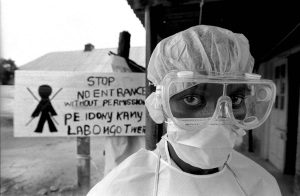Ebola outbreak is a public health emergency, says World Health Organisation.
Putting all doubts to rest, the World Health Organization (WHO) has announced that the Ebola outbreak is a public health emergency at an international level.
While it has made no recommendations on international travel or trade hold-ups, it did propose advisories on travel and contact. It stated that all those traveling from the affected countries should undergo mandatory screenings for fevers. In addition, no corpses should be brought across borders.
 Photo Credits: Follow The Outbreak
Photo Credits: Follow The Outbreak
At the announcement, Margaret Chan, Director General, WHO said that the affected nations are the ones that do not have any capacity to manage the outbreak of this magnitude and complexity by themselves. She also urged the international community to provide urgent support.
It is the largest and longest outbreak recorded of Ebola. What makes it most dangerous is the fact that it has a high mortality rate of about 50-90 per cent, since there is no licensed treatment or vaccine available.
It was in March this year that the outbreak began in Guinea, which then spread to Sierra Leone and Liberia. Cases have also been reported in Nigeria now.
 Photo Credits: Birmingham Mail
Photo Credits: Birmingham Mail
Ebola fact check
- The Ebola virus causes a hemorrhagic fever in humans and is often fatal.
- Ebola outbreaks occur primarily in remote villages in Central and West Africa, near tropical rainforests.
- The virus is usually transmitted to people from wild animals (monkeys and fruit bats) and spreads further through human-to-human transmission.
- The illness is transmitted through contact with blood and body fluids of infected people or animals, or with any items that have come in contact with such blood or body fluids.
- The Ebola virus has an incubation period of up to 21 days, which means that symptoms do not necessarily show before then.
- It displays sudden onset of fever, intense weakness, muscle pain, headache and sore throat. This is followed by vomiting, diarrhea, rash, kidney and liver failure. It might also lead to both internal and external bleeding.
- Although the disease is rare, careful hygiene should be practiced.







